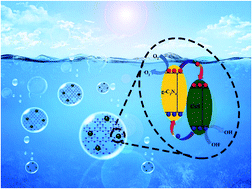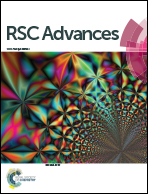In situ growth of CuS nanoparticles on g-C3N4 nanosheets for H2 production and the degradation of organic pollutant under visible-light irradiation†
Abstract
The solar-to-fuel conversion using a photocatalyst is an ideal method to solve the energy crisis and global warming. In this contribution, photocatalytic H2 production and organic pollutant removal using g-C3N4/CuS composite was demonstrated. Well dispersed CuS nanoparticles (NPs) with a size of about 10 nm were successfully grown on the surface of g-C3N4 nanosheet via a facile hydrothermal method. The as-prepared g-C3N4/CuS nanocomposite at an optimized loading exhibited a much higher visible light photoactivity, giving up to 2.7 times and 1.5 times enhancements in comparison to pure g-C3N4 for photocatalytic H2 production and methylene orange (MO) degradation, respectively. These enhanced photocatalytic activities are attributed to the interfacial transfer of photogenerated electrons and holes between g-C3N4 and CuS, which leads to effective charge separation on both parts. That is, under the visible light irradiation, electrons in the valence band (VB) of g-C3N4 can directly transfer to the CuS NPs, which can act as an electron sink and co-catalyst to promote the separation and transfer of photo-generated electrons, thus significantly improving the photocatalytic efficiency.



 Please wait while we load your content...
Please wait while we load your content...